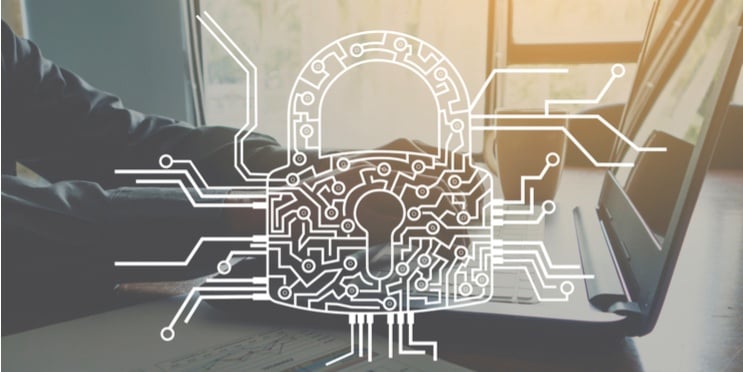Are you a cyber security professional or IT Security Manager looking for ways to protect your digital assets and prepare for the potential threats of 2024? If so, then you’ve come to the right place.
In this detailed guide, we'll take you through a step-by-step process on how to effectively safeguard and secure your company’s digital assets so that it remains both protected and accessible in an ever-changing digital landscape.
With proactive strategies ranging from assessing risks and identifying weak points to developing robust policies and plans of action, we will empower you with the resources required to stay ahead of malicious actors targeting your organisation.
So, whether in five years when trends shift, or disaster strikes despite prevention protocols put into motion today - let us help you ensure that your most valuable information asset is safe from harm!
Editor's Note: This blog post was last updated in Aug 2024.
What Are Digital Assets and Why Are They Important?
Definition
In simple terms, digital assets refer to anything that is stored digitally, such as photos, videos, music, emails, social media accounts, and even cryptocurrency.
Essentially, they are any type of information that can be accessed or transferred through a computer or digital device.
As the world becomes more reliant on technology, it's important to understand the value and significance of digital assets, as they can hold just as much importance as physical assets.
Whether it's personal memories or valuable financial investments, digital assets are a vital part of our modern lives, and it's crucial to ensure they are properly protected and managed.
Importance
The importance of digital assets lies in their ability to store and share information quickly and efficiently. This means that we can access our files on the go, collaborate with others in real time, and keep sensitive documents secure.
With the rise of remote work and distance learning, digital assets have become a critical tool for communication and productivity.
The importance of digital assets has never been more apparent, and we can expect their impact to continue growing in the future.
How to Protect Your Company’s Digital Assets in 2024
Here are 8 steps to protect your digital assets in 2024 with this step-by-step guide:
Step 1: Develop a Security Policy
The first step to protecting your company’s digital assets is to develop a comprehensive security policy.
This policy should outline the procedures and protocols for securing your data, as well as the consequences for violating these policies.
It should also specify who has access to what data, and how that access can be monitored or restricted.
Step 2: Implement Multi-Factor Authentication
Multi-factor authentication (MFA) is an important tool for protecting your company’s digital assets.
MFA requires users to provide multiple pieces of evidence to gain access to systems or applications, making it more difficult for unauthorised users to gain access.
Step 3: Use Encryption
Encryption is another important tool for protecting your digital assets from unauthorised access.
Encryption scrambles data so that it cannot be read without a key, making it much harder for hackers or other malicious actors to steal sensitive information.
Step 4: Update Software Regularly
To protect digital assets, it is essential that you update all software on a regular basis to ensure that any security vulnerabilities are patched as soon as possible.
Outdated software may contain known security flaws that can be exploited by hackers or other malicious actors, so it is important to keep all software up to date with the latest security patches and updates.
Step 5: Monitor Network Activity
Monitoring network activity can help you identify any suspicious activity on your systems, such as attempts at unauthorised access or unusual downloads or transfers of data and protect your company’s digital assets.
Monitoring network activity can also help you identify weak points in your system that need additional protection or monitoring.
Step 6: Educate Employees
Educating employees about best practices for cybersecurity is essential for keeping your digital assets protected.
Make sure employees understand the importance of strong passwords, two-factor authentication, and other security measures, and remind them not to share passwords with anyone else or click on links from unknown sources in emails or online messages.
Step 7: Invest in Security Solutions
Investing in additional security solutions such as firewalls and antivirus software can help to protect digital assets against malware and other threats from the internet and other external sources.
Additionally, consider investing in intrusion detection systems which can detect suspicious behaviour on your networks and alert you if there are any potential threats detected.
Step 8: Have a Disaster Recovery Plan
Finally, to protect your digital assets, make sure you have a disaster recovery plan in place in case something does happen to compromise your digital assets or systems go down due to an attack or natural disaster etc.
A good disaster recovery plan should include steps for restoring critical business functions quickly while minimising disruption and damage.
Bonus Point:
Look into restricted access
There is no need for everyone within your business to have access to all your digital assets – in fact this increases the potential risk to them.
As part of a security strategy, investigate restricting access to the most critical digital assets. This will not only help to protect them, but will also support accountability if there is any security breach.
To find out more about the issues that impact on the IT infrastructure of growing businesses, check out our free whitepaper below.

-1.png?width=552&height=678&name=text-image%20module%20desktop%20(4)-1.png)


.png?width=2000&name=Case%20study%20(21).png)


-2.png?width=422&height=591&name=text%20image%20tablet%20(31)-2.png)







